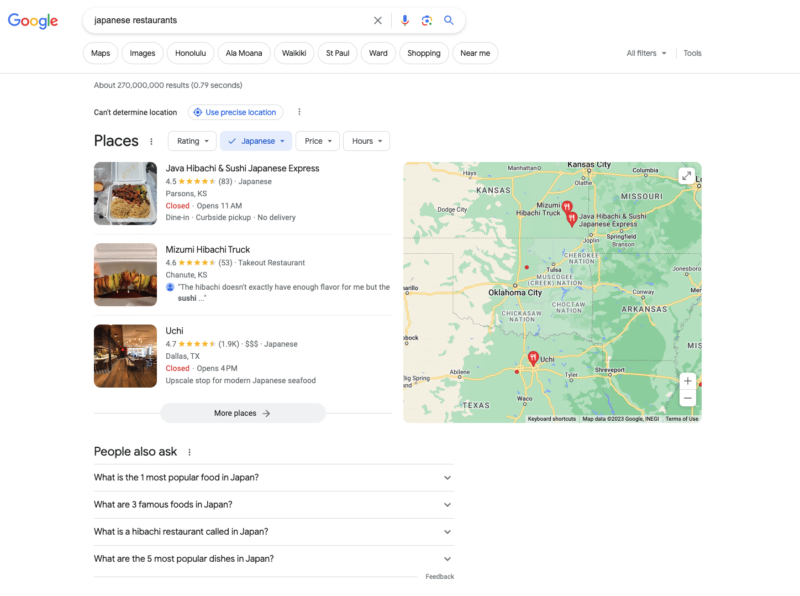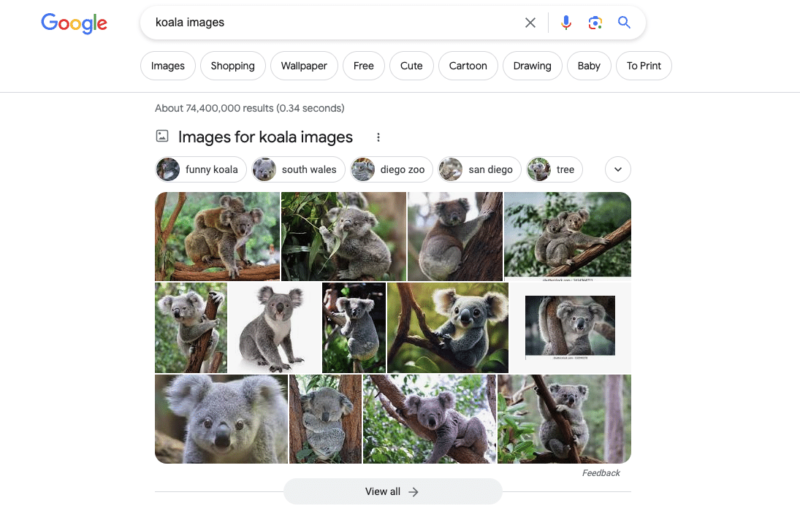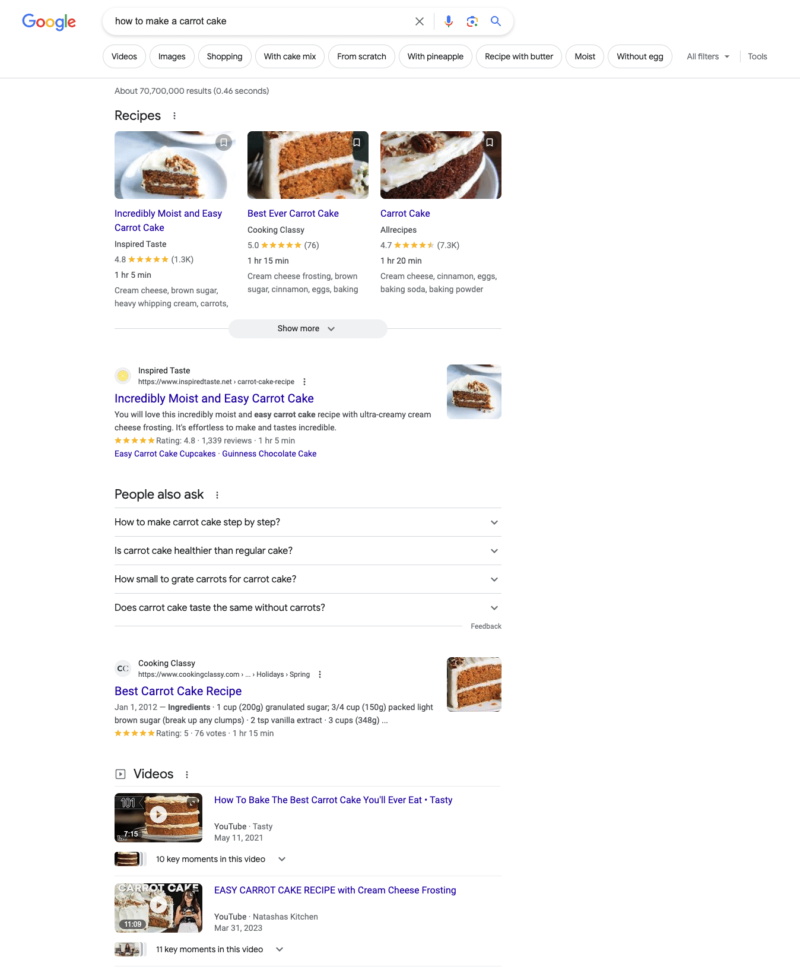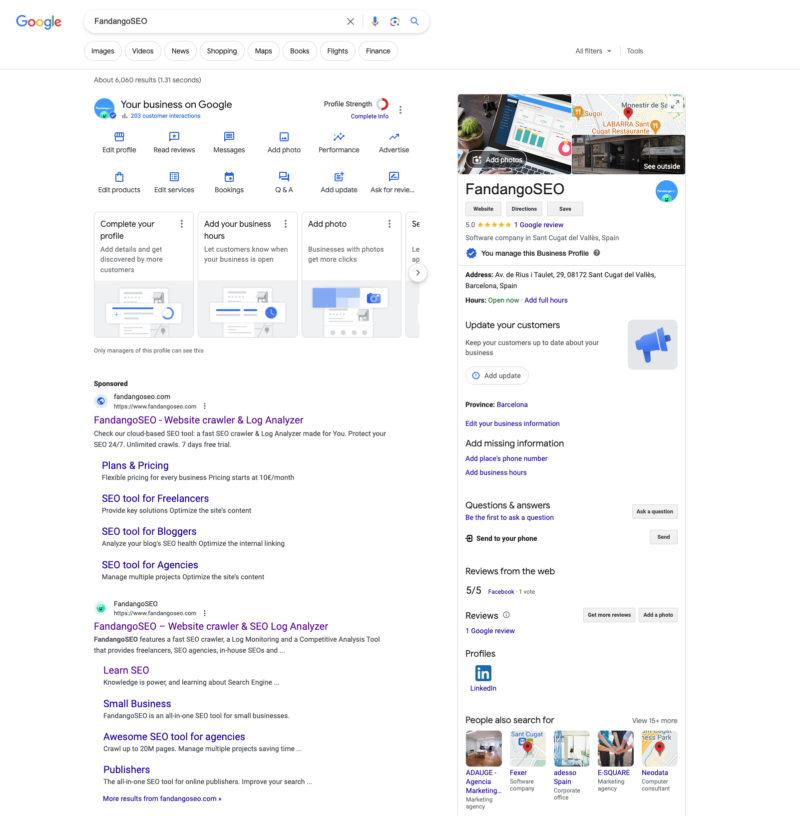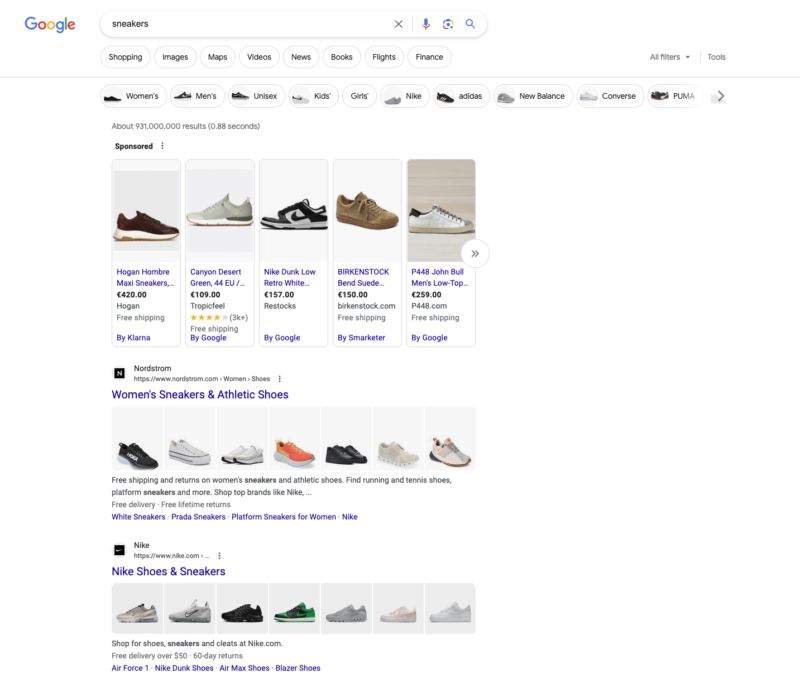If you’re into SEO (Search Engine Optimization), you’ve obviously seen this word a thousand times because this, dear SEO specialist, is where you want to see your keywords: ranking high on Google results!
Table of Contents
What is a SERP?
Many people wonder: what does SERP mean? This word is simply an acronym that stands for Search Engine Results Pages so, as its name indicates, they are the pages of results that we see on Google when we look for a keyword, and each result is called a snippet.
The list of roughly ten websites that consists of Title + URL + Meta Description is called a results page. And, since we can find them on Google and other search engines; that completes the acronym.
Keep in mind that every page must have an optimized title, an optimal URL, and a catchy meta description to encourage users to visit. You can check all these elements using an SEO crawler.
How many results do users see on a SERP?
A user normally sees from eight to ten organic results pages, but there are many elements that can create the form of a snippet, and it’s in the SEO Experts’ hands to make the most out of these possibilities.
We, as SEO specialists, can suggest to Google what information we’d like to add to the typical data in order to show complementary information and have a more visual impact. If the search engine accepts our request, some of the results will indeed look richer –which are called rich snippets.
Due to this extra information, the results will take over more space, and in some cases, you’ll only see 7 results per page. This kicks some results off of the first results page, meaning SEO Specialists must make an extra effort to push their website rankings up. Remember that websites on the first search engine results page receive almost 95% of web traffic, leaving only 5% for the remaining search results pages.
What are SERP features?
A SERP feature is any result that doesn’t obey the traditional organic result appearance. There are around 16 different ways to present information on the Google results pages, but let’s have a look at the most relevant to your SEO strategy.
The 7-Results Pages
We’ve talked about them already, so let’s see which kind of results take up all that space:
Sitelinks:
This mostly works when you Google a brand, you can tell Google Search Console to show the common result plus 6 other results underneath – the site links. These are links that send visitors directly to the category they’re interested in on the website, skipping the home or avoiding wasting time navigating through the site to find what they want.
As you can see, the company took over most of the space on the results page, so the user will have to scroll down to get further results.
Local results:
for physical shops, it’s possible to find a full list of stores on the results pages. This takes a lot of space, and it can sometimes be combined with site links, and still keep the six remaining.
The image mega-pack:
This one is less common, but it includes a pack of many images + six results underneath.
The Rich Snippets:
We talked a bit about them before: they’re basically results that include extra data that makes them a more visual and complete result. They can feature for example review stars for hotels, cooking time for recipes, thumbnails for make-up tutorials, etc. In short, any information to make them look more attractive and increase the CTR (Click Through Rate).
How do we get rich snippets? We can generate them using schema.org to add special encodings to the HTML file.
By using schema markup you can also get Video rich snippets (especially from YouTube) when someone’s looking for the video’s keyword. Remember that you can also check the correct implementation of structured data with the FandangoSEO tool.
Knowledge graph:
These offer all the information about a company in a box placed on the right side of the search results, just like this:
Generally, Google pulls out this info directly from websites and Wikipedia, but SEO Specialists can force their appearance by submitting structured data to Google My Business.
They can also show weather information, or cinema times for a movie, and are also known as the Celebrity Knowledge Panel when they offer information about a famous person.
SERP Features for digital newspapers:
There are two relevant kinds of search engine results pages for newspapers and high-quality bloggers:
– The in-depth Article: these are obtained by writing large and relevant articles by authoritative publishers.
– The News Box: more specific for newspapers, they appear when the topic is relevant (latest or trending news).
– We could even add a third one, the Tweet: again, it appears by the relevancy of the information and the account (and it’s also related to branded queries).
SERP Features for E-commerce:
Apart from implementing Rich Snippets to highlight product properties, price, availability and more, here are two that you’ll find interesting:
– Reviews: self-explanatory, they push shopping decisions when the product is well rated.
– Shopping Results: these results are paid (Product Listing Ads), and look like this:
SERP Paid Results:
Speaking of paid results, there are some SERPs that appear by bidding on keywords with AdWords and Google Shopping (as previously mentioned).
The first ones usually appear on top, and sometimes at the bottom of the page, and are identified with the word “Ad”.
Featured snippets and related questions
We can’t forget the latest addition to the SERPs universe! These two new formats appeared as a consequence of the increase in voice search, where users started asking direct questions with no grammar instead of using keywords alone. For example: “Where can I find a sushi place in Barcelona” (now) Vs. “Sushi Barcelona” (before).
The featured snippets are generated automatically when the info is relevant enough to answer a concrete question in detail, and if the page has enough authority and meets the right technical SEO requirements (site speed, etc.). Pages that get this privilege are in the top spot of the SERPs! But that’s, of course, well-deserved, because Google only picks them because of their quality, and they belong to the top five positions.
The related questions are generated by an algorithm that relates topics and suggests further questions to the initial query, and they can get super far as you keep clicking on them. They’re pretty amazing, to be honest.
There are plenty of possibilities to make your snippets stand out on the results pages, and the majority of them only involve doing a great job as an SEO specialist. If a site is well optimized and you implement schema to some pages or push some info using Google Search Console, you will increase your visibility on the search engines.
Check my SERPs now

